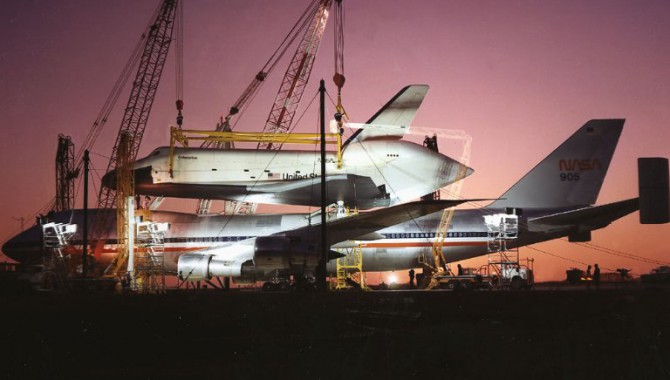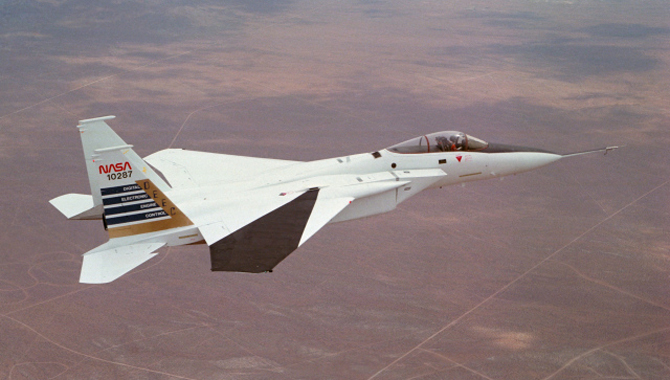
The Shuttle Orbiter Enterprise is off-loaded at Redstone Arsenal Airfield for later Mated Vertical Ground Vibration tests (MVGVT) at Marshall Space Flight Center's Dynamic Test Stand. The tests marked the first time ever that the entire shuttle complement (including orbiter, external tank, and solid rocket boosters) were mated vertically. Credit: NASA
February 29, 2012 Vol. 5, Issue 2
This month marks the 35th anniversary of the space shuttle Enterprise’s maiden flight.
On February 18, 1977, the Space Shuttle Enterprise took its first flight. Designated OV-101, the 150,000-pound spacecraft was mated to the top of a Boeing 747 ferrying aircraft at Dryden Flight Research Center (DFRC). The first flight would demonstrate how the orbiter could fly in the atmosphere and land like an airplane. The spacecraft was crewed by Fred Haise and Gordon Fullerton.
Originally named Constitution, the first orbital vehicle got its name from a Trekkie write-in campaign asking the White House to select the name “Enterprise.” The Enterprise demonstration program lasted nine months at DFRC before it moving to Marshall Space Flight Center for ground vibration tests, and then on to Kennedy Space Center for practice launches with solid rocket boosters and the external tank. In August 1979, Enterprise returned to DFRC before it would go on tour to France, Germany, Italy, England, and Canada. In November 1985, Enterprise became property of the Smithsonian Institution, which went on to display it at the Air and Space Museum’s Udvar-Hazy Center once that facility opened in 2003. Enterprise will be transferred to its new home at the Intrepid Sea, Air and Space Museum in New York this summer.
The Shuttle Orbiter Enterprise is off-loaded at Redstone Arsenal Airfield for later Mated Vertical Ground Vibration tests (MVGVT) at Marshall Space Flight Center’s Dynamic Test Stand. The tests marked the first time ever that the entire shuttle complement (including orbiter, external tank, and solid rocket boosters) were mated vertically
Featured Photo Credit: NASA







